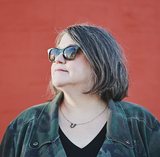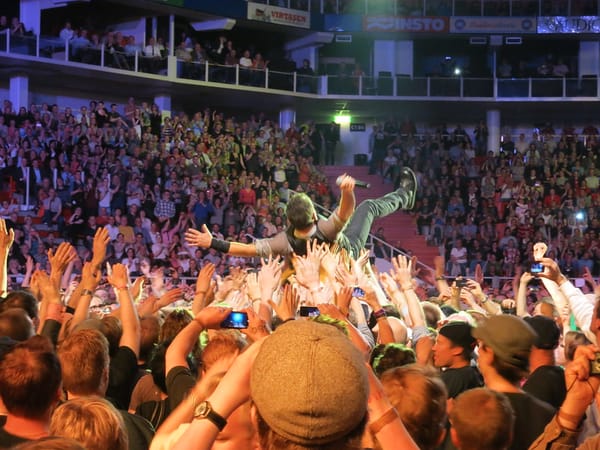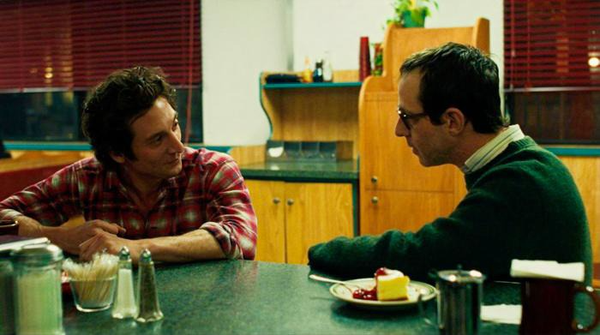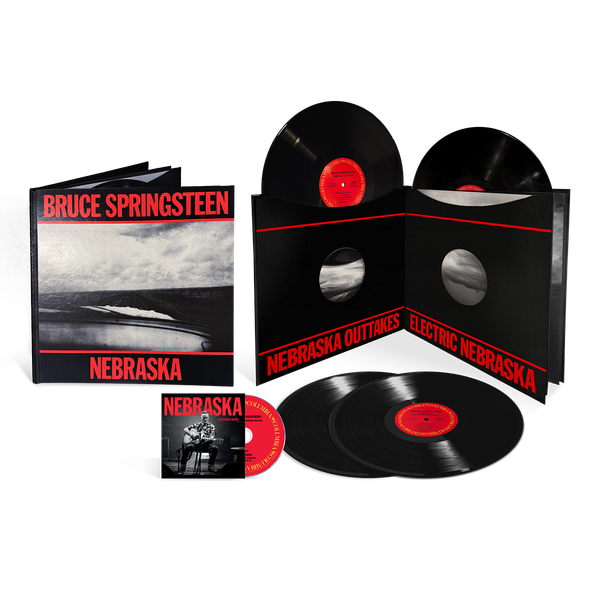Three Minute Record: The Crystals, "Then He Kissed Me"
All the stars were shining bright, and
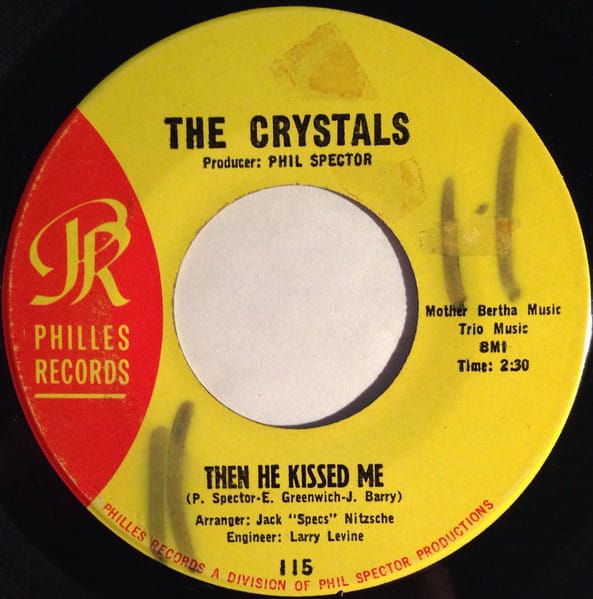
Welcome to Three Minute Record, the edition of this newsletter where we dive into Bruce Springsteen’s best cover versions. You can read more about the purpose of this exercise here and see other volumes here.
In this edition, we discuss the Crystals "Then He Kissed Me," performed as "Then She Kissed Me" on E Street.
In the intro to the Born to Run section of Songs, Bruce writes, “I was living in a small house in West Long Branch, up the coast from Asbury. I had a record player by the side of my bed. At night I’d lie back and listen to records by Roy Orbison, the Ronettes, the Beach Boys, and other great 60’s artists. These were records whose full depth I’d missed the first time around. But now I was appreciating their craft and power.”
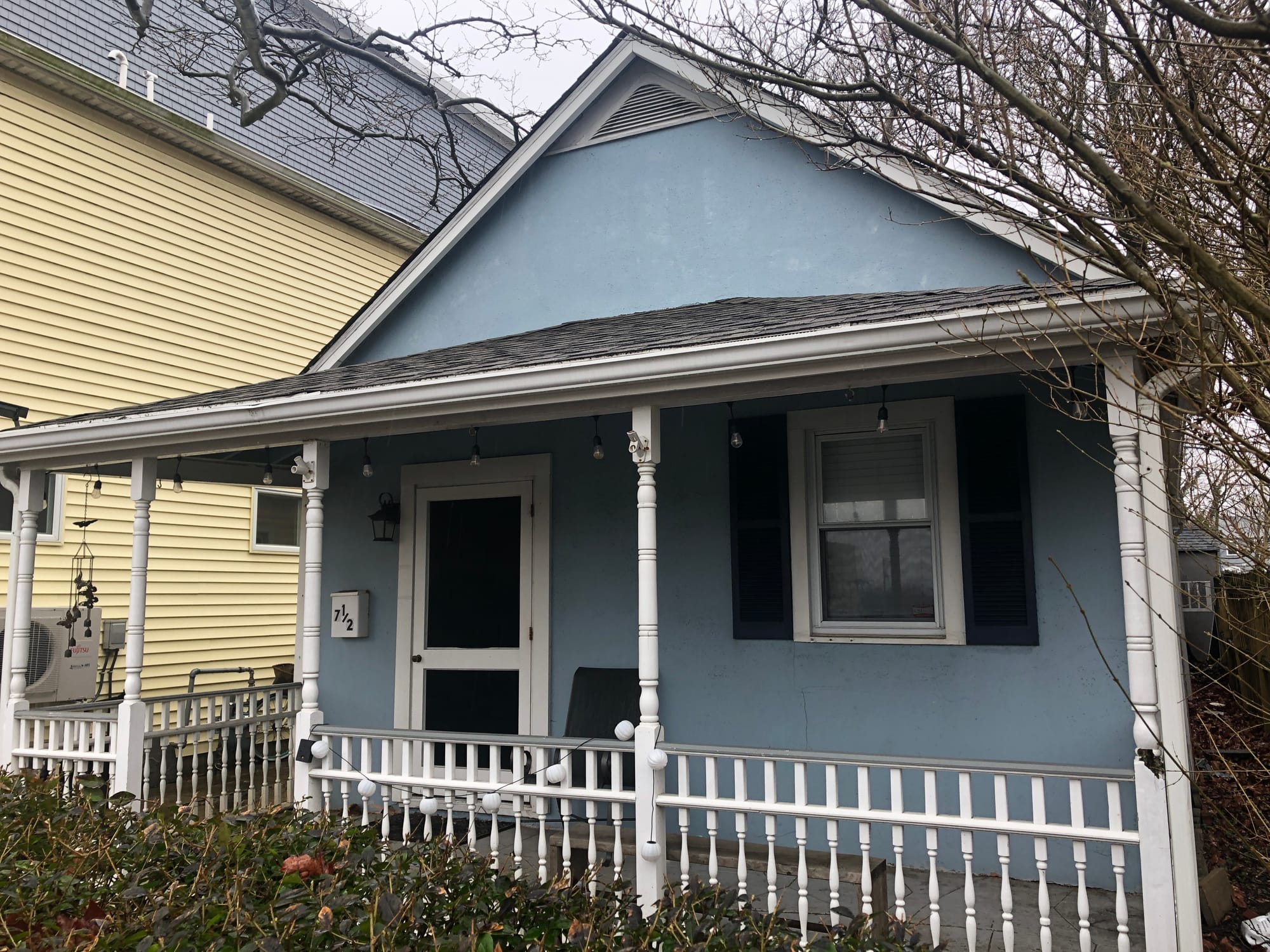
“Then She Kissed Me” had its debut at the August 8 performance at the Akron Civic Theater, the week before the Bottom Line shows, and it kind of feels like a road test. There’s no way that Bruce and the band weren’t already thinking about the Bottom Line gig as soon as they walked out of the studio at the end of July. In New York City in the 1970s (and even into the 80s to a certain extent), getting booked into that club to play a series of shows around the release of your record was a very big deal from an industry perspective. Especially in New York City, where the radio stations had not embraced him as strongly as they had in other markets like Philadelphia or Cleveland, and there were still people at his own label that thought he should have been dropped already.
Bruce hadn’t had a ton of time to think about the setlist because they’d been in the studio for so long and as we all know, it was a very intense period of time. He was still trying to finish the record – he would commute back to the studio between gigs to supervise the final elements! – and probably wasn’t yet thinking about how he wanted to present the new songs live. This is probably why that first show in Providence only featured three BTR songs. And if you look at the documented setlists from early August, the sets on those initial dates are still using much of what he had been doing on the previous tour, and it takes a while for the Born To Run songs to find their places.
The covers always had their role in an E Street Band show and that hadn’t changed, especially with the inspiration Bruce drew from them for this new record. He had 10 shows he had to fill out at the Bottom Line, with the trendiest tastemakers and industry machers in attendance, 2 shows a night for a week, early and late. This was, still, only the third album, back when records were 10-12 songs tops – covers let you extend your repertoire, let you take a little bit of a breath, let you showcase your great taste in music, let you advertise your influences, and also, let you as an artist stake your place in rock and roll’s lineage.
Remember, this is before there was any resurgent movement to appreciate the early 60’s Brill Building hits as the masterpieces that they are. It was music for kids when they first came out and now, 10 years later, coming out of the late 60’s and the counterculture of “don’t trust anyone over 35,” might as well have been Mantovani. It was your parents’ music. You were not hearing any of these great songs on FM radio. You heard them on WCBS 101, which had just switched to an oldies format a few years earlier.
There were musicians and other music fans who were still listening to those songs, or more likely, never stopped. Lou Reed never stopped talking about his love of doo-wop. Patti Smith wrote a letter to Lenny Kaye because she liked an article he had written about the doo-wop scene and they’d dance to 50’s singles at Village Oldies when things were slow. Joey Ramone worshipped Ronnie Spector. None of those artists made music that sounded like those songs. But they were all influenced by it and carried it in their hearts. In the case of Bruce Springsteen, he wanted to go back to the roots of rock and roll and see what elements from that time could serve him right here and now.
When Greil Marcus wrote about Born to Run for Rolling Stone, he said: “It is a magnificent album that pays off on every bet ever placed on him—a ’57 Chevy running on melted down Crystals records that shuts down every claim that has been made. And it should crack his future wide open.” But not everyone was going to catch the references like that. And that’s where the Bottom Line trilogy of covers comes in. When you play a song by Johnny Rivers or Jackie DeShannon’s “When You Walk In The Room” or the Crystals adjacent to “Spirit In The Night” and “Growin’ Up” (for example), you are telling the audience that you get it, that you’re lifers, that this matters, and that you are declaring that you are part of this lineage.
It is absolutely worth pointing out that “Spirit” into “Then (S)he Kissed Me” and then into “Growin’ Up” is, quite frankly, a blindingly genius segue that demonstrates beyond the shadow of a doubt that Bruce Springsteen had internalized the lessons he’d learned from his nights in 7 ½ West End Court spinning oldies. He made an old song feel contemporary (at least for that moment) by the way he contextualized it within his own music.
I love how he sounds here: sly, a little coy, delighted, excited. The moment of redemption, finally getting the album done and now here is his coming out party. He will dance on tables, and he will gender-swap this golden oldie and make it sound and feel like he’d always been singing it.
Also, the E Street Band deserves their own separate shoutout, because they have to approximate the Wrecking Crew, a task that many have tried and failed at – and they're having to recreate the lushness of a Phil Spector production in a live context. They take some liberties – Max is doing a callback to the drums in "Be My Baby," which is adjacent but not exact, there's no sax solo in the original either, and there's way too much jingle bells – but it's close enough in spirit, so it all works beautifully.
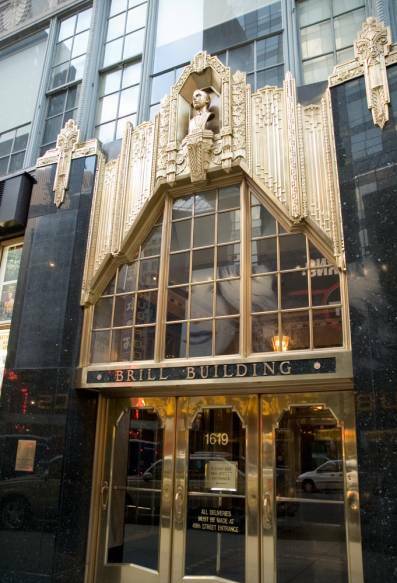
“Then He Kissed Me” was written by Ellie Greenwich and Jeff Berry, who had their own office in the Brill Building with their names on the door. They also wrote “Be My Baby,” “Baby, I Love You,” and “Da Doo Ron Ron,” among many other absolutely timeless classics. Part of the genius of the Brill Building songwriters was their ability to distill a complex emotion with the simplest language possible. That’s why Bruce could pick it up and change the pronouns and simply step into the song and inhabit it. That’s still not easy, but it didn’t require any kind of clever rewrite of the existing lyrics or significant changes to the story.
But that is not the only reason that this cover succeeds as well as it did. It’s powerful because you believe him, because he is able to channel the same kind of emotion that the Crystals’ La La Brooks did when she recorded it. You hear passion and ardor and hope and wonder in these 1975-era Springsteen versions, which is exactly what you hear in the grooves of the original 45. It would not have made it out of soundcheck if he couldn’t have managed to do that because it would have landed flatter than a pancake. It would have been a gimmick and not a genuine expression of admiration. For an example of a cover where exactly that happened, I would refer you to KISS’ version (where they also flipped the pronouns) on 1977’s Love Gun. (I’m not saying that KISS copied Bruce but KISS copied a lot of things over the years.)
There is, alas, no great story about the recording of the song. Just like Berry Gordy wanting to churn out hits at Motown like the assembly line at Ford, Phil Spector also wanted hits and didn’t much care what it took to produce them. He signed the Crystals to Philles, his record label, and their initial singles were successful. But Phil Spector went back to LA and wanted to work there, so the Crystals flew to Los Angeles.
That’s where they first encountered Darlene Love and the rest of the Blossoms, who had already recorded songs that would be released under the Crystals’ name because they couldn’t get to LA fast enough for his liking, so Philles released “He’s A Rebel” and it was credited to the Crystals, who then had to perform a song they had nothing to do with. (He’d later have the Ronettes record material that would go out on a Crystals record.) The Crystals were under-age and their parents did not want them out in Los Angeles with Phil Spector, even chaperoned. (They weren’t wrong!)
But “Then He Kissed Me” was legitimately performed by the actual Crystals, out at Gold Star Studios with The Wrecking Crew as the band. They had real potential and got a raw deal because Phil Spector was a control freak, because he was obsessed with Veronica Bennett, because to him the talent was interchangeable. Darlene Love was one of the only singers who ever stood up to him, and she could do that because she was already a working vocalist who knew her value. We all know what happened to other people who stood up to Phil Spector.
The holy trinity of 1975 Springsteen covers are probably “Then (S)he Kissed Me,” “When You Walk In The Room,” and “Mountain of Love,” all of which entered the vernacular because of the magic of FM radio. There were many other legendary covers performed this year (it’s when the Detroit Medley was born), but these three stand out in what is a very crowded field. We owe “Mountain of Love” to the Main Point broadcast and then the latter two entered the canon because the early Bottom Line show on August 15, 1975 was broadcast live on WNEW-FM. (We will talk about the Bottom Line shows in more detail in August.)
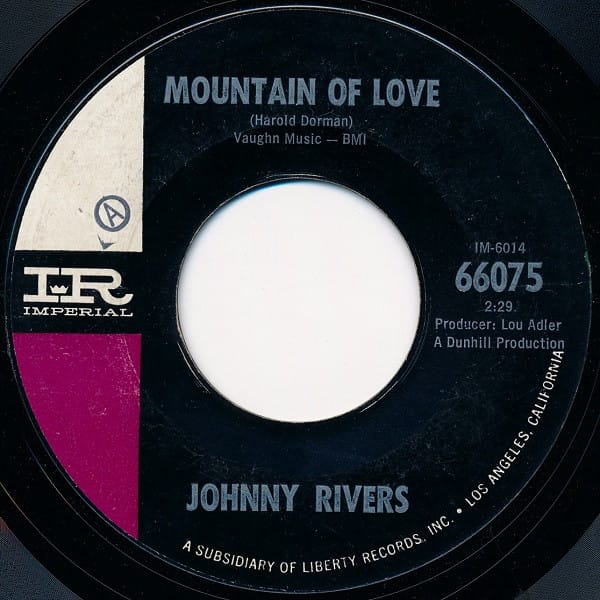
“Then She Kissed Me” disappeared after 1975, probably because the point had been made, and also because there were other covers that entered the picture that served the needs of the setlist better. But it’s one of those songs that made it onto countless bootleg bonus tracks because everyone recognized it. It wasn’t “It’s Gonna Work Out Fine,” which is a great song, but not the kind of immediately recognizable hit like “Then He Kissed Me,” which charted as high as #2 on the Billboard Hot 100.
But then, one night in St. Louis in 2008, Bruce Springsteen and the E Street Band walked out onstage and opened the show with “Then (S)he Kissed Me.” (This is the same night that they played “Mountain of Love,” another song that had been AWOL for 33 years.) It was the first song, and there was no explanation and no discussion, just: “Good evening, St. Louis!” and the chords rang out and it could not be anything else than what it was. And 20,000 people collectively went bananas, even the ones who didn’t know that it was a legendary E Street cover knew the song, because we all know the song. It is a singular moment in rock and roll history. He’s not that 26 year old kid any more, but he still sounds excited and proud and delighted. He knew exactly what he was doing at that moment.
--
Sources:
- But Will You Love Me Tomorrow: An Oral History of the 60’s Girl Groups - Laura Flam and Emily Sieu Liebowitz | review
- Girl Groups, Girl Culture - Jacqueline Warwick

